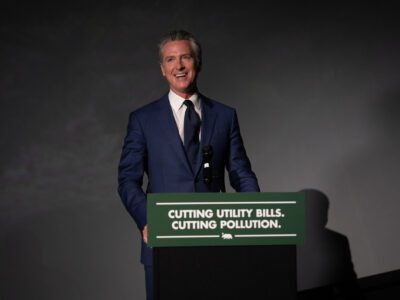Leveraging Cap-And-Trade Proceeds for Long-Term Utility Bill Savings and Pollution Reduction
State leaders have an opportunity to expand the benefits with cap-and-trade reauthorization.
California’s decades-long role as a climate action pioneer is facing serious headwinds. While the Trump administration and its allies have launched a full-scale attack on clean technologies, state leaders are also wrestling with an electorate now more focused on lowering prices than environmental protection. Energy costs stand in the middle.
This dynamic is playing out right now as state leaders debate the post-2030 future of the state’s cap-and-trade program, which generates billions of dollars in proceeds from businesses that choose to buy pollution allowances under the program rather than reduce their carbon emissions. Affordability concerns are top of mind for leaders thinking through how to allocate these funds – particularly to help alleviate high electricity rates, which have doubled over the past five years.
But state leaders could be missing an important opportunity to achieve both utility bill reductions and environmental goals. Specifically, the latest Assembly proposal to extend cap and trade through 2045 re-ups and modifies the California Climate Credit, which is an annual rebate to electricity ratepayers funded from the sale of emission allowances.
In 2025, the climate credit includes two payments (distributed in April and October) between $56 and $81 each for customers of investor-owned utilities. These relatively moderate payments serve mostly to mask high utility bills, without providing any long-term solution to spiraling rates.
The Assembly’s proposal now offers three reforms to this program, including prioritizing residential customers over small business and retail ones, basing the credit on how much electricity the household uses, and providing it during high-bill months (typically the summertime when households use more air conditioning).
But rather than just handing out more cash payments to ratepayers, the legislature could instead use the same dollars to create a far-bigger impact on rates and the environment. The state is already moving in this direction with the Assembly’s proposal to dedicate some cap-and-trade proceeds to a badly needed Clean Energy Infrastructure Investment Fund. This fund will provide public financing for needed grid investments like new transmission lines to serve renewable energy areas, as Net-Zero California describes and as CLEE recommended in a report last year.
Expanding on this proposal, state leaders could redirect the climate credit to help ratepayers access low- or no-cost financing for energy efficiency upgrades, community solar and energy storage deployments, and home electrification (i.e. converting natural gas appliances to higher-efficiency electric heat pumps, cooktops, clothes dryers and water heaters). Ratepayers would then repay the loans via on-bill payments that would be less than their monthly savings. These programs have a track record of success around the country (largely pioneered in other states); they allow the state to leverage a relatively modest pot of public funds to generate significant residential investment.
Those dollars could be vital to help ratepayers reduce their overall utility bills for the long term, given that the high upfront costs of many of these upgrades and appliances make accessing them difficult for lower-income residents. They can reduce pollution and help the state achieve its environmental goals, while furthering lower-cost clean energy deployment, like community solar and storage. And for lower-income renters who can’t make permanent upgrades to their homes, state leaders could design the programs to share some of the benefits with landlords, who ultimately have final say on these upgrades.
While the climate credit offers important energy bill relief for many Californians, legislators should instead consider using these hard-fought polluter proceeds to drive long-term home energy improvements – unlocking even more value for both ratepayers and the environment. In these challenging times for both environmental protection and many household budgets, such a move would be a true win-win for California.







So instead of everyone getting a little bit back, now it would only go to the more energetic amongst us? (I am just now deep in the throes of trying and failing to understand Hvac systems. How come we don’t have independent consultants who could do all this work for me? Or … dooooo they exist? Please, if anyone’s got a name!) Won’t the PUC get mad at you?
Btw, what does this mean – “basing the credit on how much electricity the household uses”? Is this some sort of tiering?
As to your overall point though, I am in agreement. I mean, this sounds much better than a HSR project which will benefit very few people. (I tend though to think that broad based programs survive longer.)